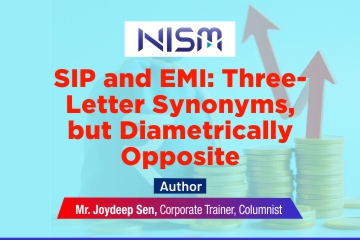
Urban Infrastructure Financing in India: Challenges and Solutions for a Deeper Municipal Bond Market
A World Bank report on ‘Financing India’s urban infrastructure needs’ estimates that India’s cities will require, till 2036, about USD 840 billion to build out the infrastructure required for the burgeoning urban population.1 This funding will be required mainly for water supply, sewage, solid waste, and mass transit projects. The report estimates that the total capital expenditure in urban infrastructure in the last decade, by all Indian cities, was just 0.6% of GDP as compared to 2.8% of GDP in China. India needs to invest a significant amount in urban infrastructure, and the current dependence of the Urban Local Bodies (ULBs) on their own tax and non-tax revenue, as well as transfers and grants from the government, will not suffice.
The funding gap will necessarily need to be bridged by market borrowings. For this, a vibrant municipal bond market has to develop.
As per the RBI Report on Municipal Finance (Nov 2024),2 the total estimated borrowings by ULBs from financial institutions were just ₹3,364 crores. This is less than 0.05% of GDP and constitutes just 5% of the total municipal receipts. As per SEBI data, the total municipal bond issuance for the period 2017 to 2025 is a mere ₹2,833.90 crores.3 The SEBI municipal bond dashboard indicates that as of 30th April, 2025, there are only 18 Municipal Bonds with outstanding maturity, across 37 ISINs. These 18 bonds have been issued by 13 ULBs. Of them, 4 are from Gujarat and 3 from Uttar Pradesh. Trading data on municipal bond trades, as put out by the National Stock Exchange, indicates very low liquidity in the secondary market.4 In 2024, the total traded volume was ₹281.45 crores, with just 4 bonds traded, and in 2023, the total traded volume was ₹193 crores, with just 4 bonds traded.
This data tells us that (i) ULBs have not resorted to either traditional bank financing or financing from the capital markets, and (ii) both the primary market and secondary market for Municipal Bonds are very shallow. The Municipal Bond market has not developed in India, as there are no real incentives for Urban Local Bodies (ULBs) to access the market at scale. External funding options like municipal bonds are not preferred, as the extent of capex funding from the Central Government and State Governments is very high. ULBs, almost entirely, rely on government-subsidized funding and grants, rather than accessing the capital markets, to meet their funding gaps. This reliance reduces the need for ULBs to build independent creditworthiness or establish robust financial management practices.
The big challenge will be to shift the financial landscape so that reliance on central and state funds does not completely undercut local initiatives. While central funds have been critical in driving infrastructure growth, they inadvertently reduce the pressure on ULBs to diversify their funding sources. This, in turn, does not push the ULBs to build a reputation for fiscal integrity. The broader conversation, therefore, has to be about balancing centralized funding with decentralized fiscal responsibility. It is therefore imperative that we find answers to what needs to be done to develop the municipal bond market.
Some possible initiatives and solutions are discussed below:
1. Push ULBS to reduce their dependence on grants Unless ULBs are pushed to reduce their dependence on grants, they will not feel the need to access the capital markets. The policy direction should be towards gradually shifting from grant funding to performance-linked funding and nudging ULBs towards self-reliance. Unless ULBs feel the need to tap into other sources of finance, they are unlikely to develop the required institutional, technical, and financial capacity. A reduced dependence on grants will incentivize them to improve revenue generation, reduce inefficiencies, and invest in capacity building. The Urban Challenge Fund is a step in this direction.5 The Union Budget (2025-26) has proposed the setting up of an Urban Challenge Fund of ₹1 lakh crores. This fund will meet the funding requirements of urban infrastructure projects to the extent of 25% of the project cost. The ULBs will be required to fund at least 50% of the project cost through municipal bonds, bank borrowings, or public-private partnerships.
2. Robust financial reporting and financial management ULBs must be mandated to develop robust financial reporting systems, follow standard accounting practices, undergo regular audits, and make public disclosures of their financials. In the long run, the avoidance of financial discipline will be detrimental to the health of ULBs. ULBs must also improve their financial management by increasing revenue generation and better control of expenditure. All this will lead to higher transparency and better governance, and improve the credit ratings of ULBs
3. Bankable projects Capacity-building programs through public-private partnerships must be implemented to support ULBs in preparing bankable projects and developing internal expertise in project management. There is a need to set up a dedicated municipal finance advisory body to support ULBs in managing bond issuances and navigating the capital market effectively. Investors and lenders will only put their money into projects that are financially viable, technically sound, socially acceptable, and have manageable risks.
4. Retail investor participation Retail investor participation will be key to the growth of the municipal bond market. Increased retail participation is key to a more liquid secondary market. To increase retail participation, the perceived risk inherent in these bonds needs to be reduced. This can be done through credit enhancement. Central and State governments could offer partial credit guarantee or viability gap funding for ULBs issuing bonds. Giving municipal bonds tax-free status will boost retail participation. Lower ticket sizes also help in higher retail participation. SEBI has reduced the face value of municipal bonds from ₹1 lakh to ₹10,000, which is bound to increase retail participation.
5. Address concerns of Institutional investors The concerns of the institutional investors also need to be addressed. Insurance Funds and Pension Funds, which are long-term investors, are constrained because their investment guidelines restrict their exposure to lower-rated bonds, and most ULBs have lower credit ratings. There is a need to consider whether, for such institutional investors, municipal bonds can be treated as “approved investments” or considered as part of their mandated infrastructure exposure. The small size of these bond issues, given that most ULBs have come out with ₹200 crore bond issuances, is also a dampener. There is a need to aggregate projects across ULBs through pooled financing and increase the issue size to levels acceptable to institutional investors.
6. Innovative financial instruments Financial innovations such as green bonds, pooled funds, and public-private partnership (PPP) bonds can play a transformative role in the municipal bond market by enhancing governance, service delivery, and institutional responsiveness. These instruments do more than finance projects; they embed accountability, transparency, and adaptive learning into the institutional framework. Green bonds are earmarked for environmentally focused projects, requiring compliance with frameworks like SEBI’s Green Debt Guidelines. Issuers must prepare detailed project reports, disclose use-of-proceeds, and conduct environmental impact reporting. Green- labelled bonds attract lower borrowing costs than conventional bonds and also will encourage ULBs to align their financing with environmental and social outcomes. Pooled funds, especially those with multi- stakeholder oversight, promote shared decision- making and resource accountability. Pooled municipal bond funds result in standardization across ULBs, such as adopting uniform financial practices. By aggregating resources, pooled funds allow smaller cities to undertake larger infrastructure or service delivery projects that would otherwise be unaffordable. Public-Private Partnership (PPP) bonds, when structured with clear performance metrics and transparent contracts, reduce corruption risks and strengthen administrative accountability. PPPs leverage private sector expertise, innovation, and cost-efficiency to improve infrastructure and public services in sectors like transport, sanitation, and healthcare.
7. Insolvency framework Specific statutes governing the insolvency of ULBs need to be introduced. Without clear recourse mechanisms in case of default, investors will view Municipal Bonds as high-risk. Statutory insolvency frameworks act as a deterrent against financial mismanagement. To make ULBs creditworthy, accountable, and investment-ready, we need a dedicated legal framework for municipal insolvency.
Half of India will be living in its cities in the next few decades. India will need to build out urban infrastructure in a big way, for which the capital requirements will be huge. Without doubt, India needs a well-developed municipal bond market.
The opinions expressed in this article are solely those of the author and do not reflect the opinions or views of NISM.
Author:
Mr. Sashi Krishnan – Director NISM
Article originally published in the Prime Database.
https://www.primedatabase.com/article/2025/Article-Sashi_Krishnan.pdf

With a host of opinions and views floating around, it is important to make your own estimate Context Nowadays, you…

When we think of investments in Mutual Funds, we think of investments in schemes i.e. products offered by Mutual Funds.…

SIP and EMI: three-letter synonyms, but diametrically opposite You are king of your money or slave to your expenses SIP…
© 2025 National Institute of Securities Markets (NISM). All rights reserved.